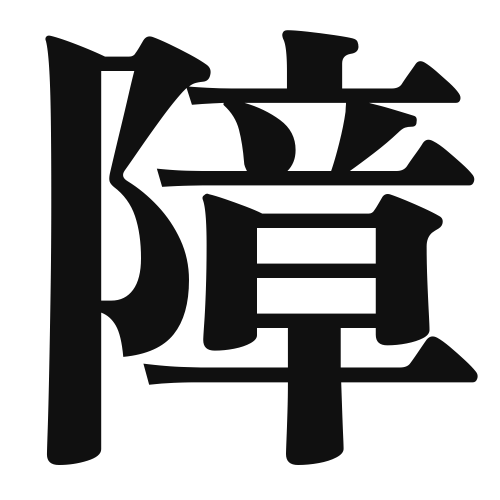1. Overview of Meaning
The kanji “障” (shō) generally means “obstacle” or “barrier.” It refers to something that hinders progress or creates a hindrance in various contexts, such as physical, emotional, or social situations.
2. Formation and Radical
Formation of the Kanji: The kanji “障” is a compound character, which means it is formed by combining different elements. It is classified as a compound ideograph (会意文字), as it combines the meanings of its components to convey the idea of obstruction.
Radical: The radical of “障” is “阜” (fu), which relates to mounds or hills, suggesting a physical barrier or elevation that can obstruct movement.
3. Examples of Usage
Common Words and Phrases: Some frequently used words that include “障” are:
- 障害 (shōgai) – “disability” or “impediment”
- 障壁 (shōheki) – “barrier” or “obstacle”
Example Sentences in Daily Conversation:
- 彼は障害を乗り越えて成功した。 (Kare wa shōgai o norikoete seikō shita.) – “He overcame obstacles and succeeded.”
- この障壁を取り除く必要があります。 (Kono shōheki o tori nozoku hitsuyō ga arimasu.) – “We need to remove this barrier.”
4. Synonyms and Antonyms
Similar Kanji: A kanji with a similar meaning is “妨” (bō), which means “to hinder” or “to obstruct.” The difference lies in the context; “障” often refers to physical or metaphorical barriers, while “妨” emphasizes the act of hindering.
Antonyms: A kanji with an opposite meaning is “助” (jo), which means “to help” or “to assist.” While “障” indicates an obstruction, “助” signifies support and facilitation.
5. Cultural and Historical Background
Relation to Japanese Culture: The concept of “障” is significant in Japanese culture, particularly in discussions about overcoming challenges and disabilities. It reflects the societal values of resilience and support for those facing obstacles.
Proverbs and Idioms: One relevant proverb is “障子を開けて光を入れよ” (Shōji o akete hikari o ireyō), which translates to “Open the sliding door to let in the light,” symbolizing the idea of overcoming barriers to allow positivity and growth.
